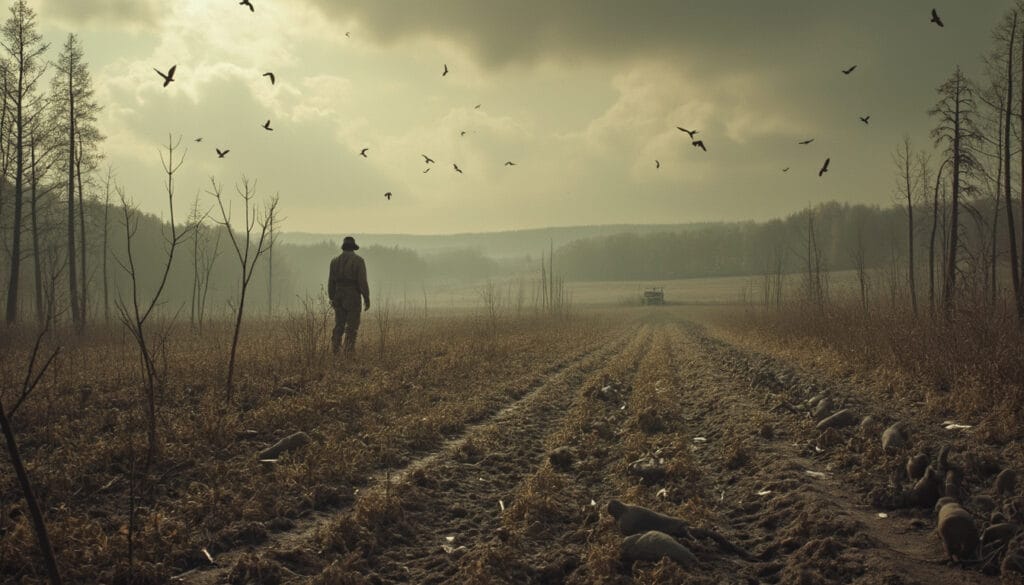The musk ox, a true relic of the Ice Age, symbolizes robustness with its thick woolly coat and its ability to thrive in the extreme cold conditions of the Arctic. With a proven resistance to temperatures dropping as low as -40 °C, this animal is designed to face the harshness of polar winters. Today, faced with a warming world, the survival of the musk ox is being tested by increasingly hot summers. Can this unique species continue to reign over the tundra despite climate change?
The musk ox, a survivor from the Ice Age, is known for its robust body similar to that of a bison and its thick woolly coat, capable of withstanding winter temperatures as low as -70 degrees Celsius. Adapted to the black polar winters of the Arctic where temperatures can drop below -20 °C for months, this iconic mammal gives birth with the return of light to enjoy the 24-hour grazing days before their disappearance. Currently classified as a species of least concern, musk oxen now face new challenges due to rising temperatures caused by climate change. Diseases and parasites are increasing throughout their range. In the Canadian Arctic islands, for example, the largest global populations of musk oxen have decreased by more than half since the early 2000s. Will the musk ox continue to thrive in these changing conditions?

the adaptation of the musk ox to extreme Arctic conditions
The musk ox is a true survivor from the Ice Age. This species, equipped with a thick woolly coat, has perfected its adaptation to glacial temperatures that easily drop below -40°C. Their fleece consists of a soft inner layer called qiviut, renowned for being one of the warmest natural fibers in the world. They are capable of thriving in extreme cold and can even withstand icy autumn storms. However, global warming and rising temperatures threaten this remarkable resilience.
Traversing the Arctic tundra, musk oxen move in groups, thereby protecting each other from the cold and predators. This species, often compared to miniature mammoths for its coat and physique, has also developed social intelligence that enables it to survive the rigors of the tundra. They primarily live in North America, and their strong adaptability allowed them to survive the last glaciation.
the challenges posed by climate change
As global temperatures rise, musk oxen must face new challenges. Warming disrupts their natural habitats, pushing these animals to migrate to more northern lands. Variations in daylight duration, along with summers of continuous light, impact their ability to feed effectively throughout the year. Their traditional grazing areas are becoming unstable, allowing predators to take advantage during these critical transition periods.
While musk oxen are currently classified as being of least concern in terms of conservation, diseases exacerbated by heat, such as bacterial infections like Erysipelothrix rhusiopathiae, are becoming increasingly prevalent. These heat-related diseases present a high mortality rate. This situation is concerning for researchers as it threatens the survival of fragmented populations of musk oxen.
the implications for the future of musk oxen
Experts, such as Professor Susan Kutz from the University of Calgary, report that climate change intensifies the challenges that the musk ox must face. Scientists fear that environmental disruptions caused by rising temperatures may render musk oxen more vulnerable to new diseases, threatening their future. They question their ability to adapt and regulate these drastic changes in their ecosystem.
The survival of the musk ox depends on its ability to adapt to the new climatic conditions of the Arctic. Even though populations in Greenland remain currently isolated from the threats of southern diseases, researchers continue to monitor these species closely to anticipate any future impacts. The implications of warming raise crucial questions about the food security of indigenous populations dependent on musk oxen, as well as the diversity of the Arctic ecosystem.
Articles similaires
Thank you!
We will contact you soon.














